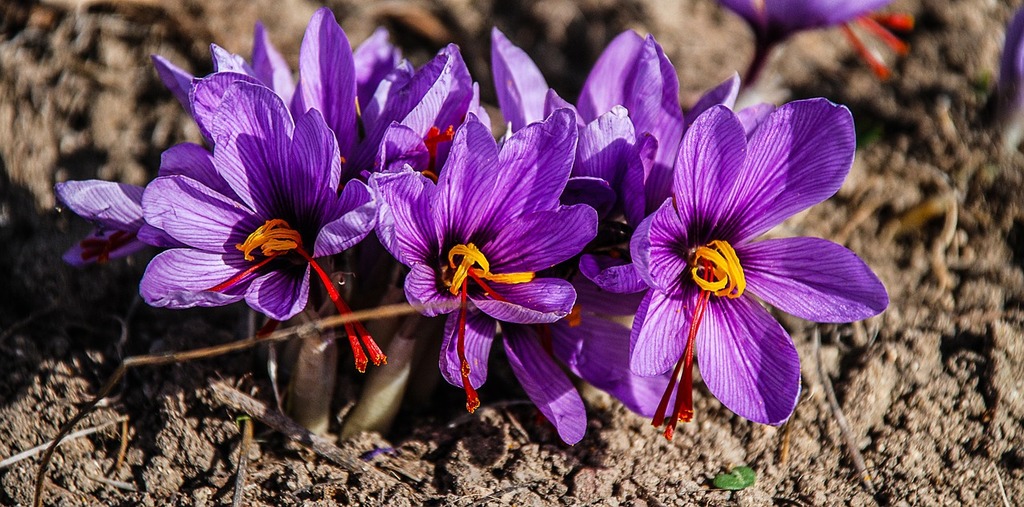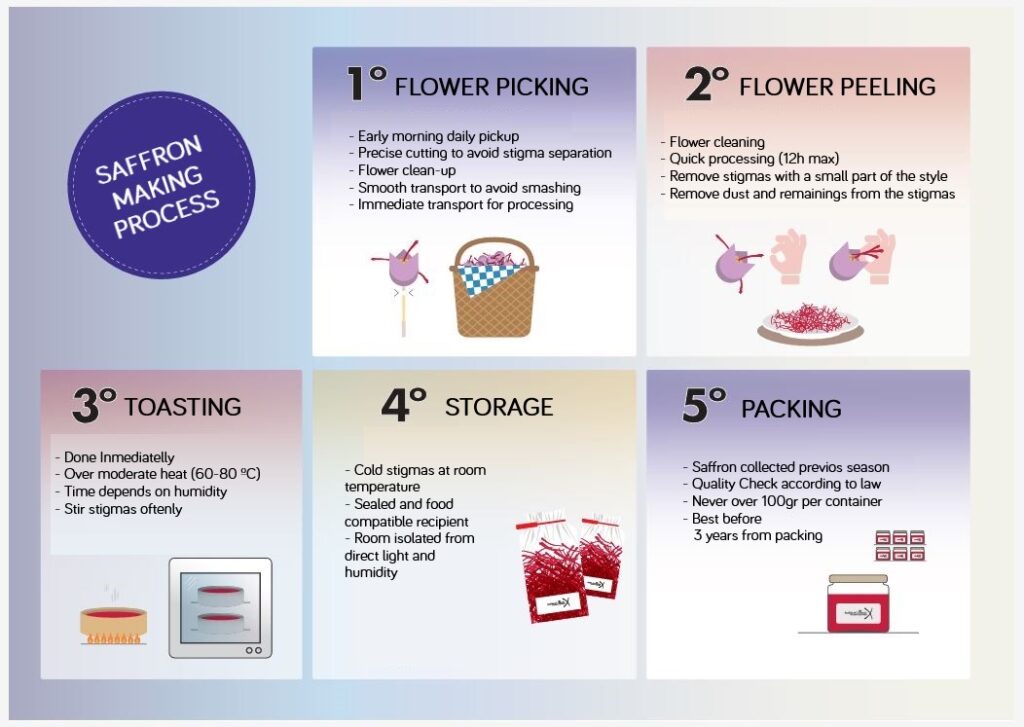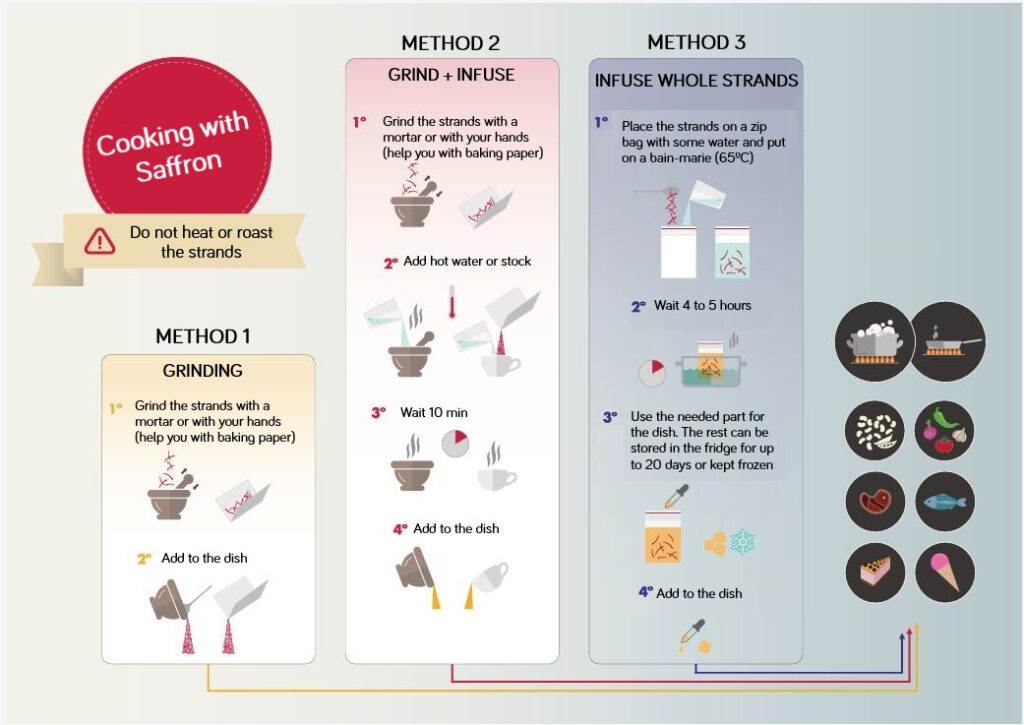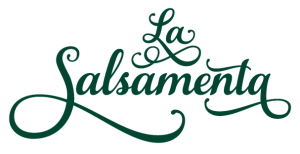Safforn: Ingredients of our Paella

Let’s dive deeper into Saffron Paella Ingredient, a key component used in our Paella workshop. It’s part of the Crocus sativus flower, which people most probably domesticated in Greece around the Bronze Age.
Saffron is one of the most expensive, if not the most, species in the world. That’s not only by its power to add a unique flavor as well as an intense yellowed color to our dishes, it is also due to the great amount of work required to produce the strands. To obtain 450 grams of dried saffron, collectors must gather over 70,000 flowers.
Actually, the 2 main regions of production are Spain and Iran. You could differentiate them (though it’s not easy) because the Iranian Saffron is darker, with softer smell and quite more bitterness. This is mainly due to climatic differences between both areas. Additionally, automated systems handle most of the collection process, which results in shorter strands compared to the Spanish ones where collectors use manual methods.
Production:
The one we are using is Hebra Roja, from La Mancha in Spain. Starting with the recollection when flower is opening (normally end of Autumn) until the drying by different technics, mainly over hot air flows.

Getting back to the kitchen:
One of its main characteristics is that its pigments are soluble in water making them easy to extract and due to that it has been quite used over the ages in clothing and painting. But let’s focus on the Kitchen!
Here’s a brief summary of the most common ways to process saffron for use in our dishes:

For rices and of course for our Paella at La Salsamenta use method 2 with an amount of 7 to 10 strands per person, depending on the intensity of color and flavor you want on your dish.
Method 1 is most commonly used, stews, omelettes, legumes and sauces. You can add about 10 strands for every 4 people. Add it at the beginning of the cooking (more flavor and color) or wait until the last 3 minutes (more aromatic). You can also use it for sweets like ice creams, cookies, cupcakes, etc…
Method 3 is most commonly used in professional kitchens, as you can store the results in the freezer and get back to it when you need it. Feel free to try it!
If you want to keep reading more in deep about saffron, one of the best paella ingredient, you can go here:
- La Cocina y los Alimentos, Harold McGee
- DOP Azafran La Mancha website
- Verdades y Mentiras sobre el azafran, Gastroactitud
We will keep posting soon about our ingredients and about things related to our Paella Cooking Class!

